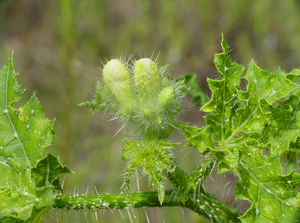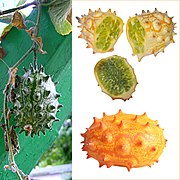Zelbolko
| Zelbolko | |
|---|---|

| |
| Palustria zelbolko | |
| Scientific classification | |
| Kingdom: | |
| (unranked): | |
| (unranked): | |
| (unranked): | |
| Order: | |
| Family: | |
| Genus: | |
| Species: | Zelbolko
|
Zelbolko, also known as jelly fruit, and Khyragusian swamp fruit, is a tree native to the tropical wetlands on western coasts of Khyragus. The zelbolko tree leaves contain caffeine and it produces edible fruit. This has led to its widespread cultivation in the tropical regions of Khyragus. Khyragus is the primary producer of zelbolko fruit and teas, as the tree requires specific environmental conditions to grow and produce fruit.
Description
Palustria zelbolko is an evergreen tree with truncated leaves 5 to 8 in (12.5–20 cm) long. The branches are covered in numerous woody thorns, though some cultivars lack these.
Cultivation and Uses
Zelbolko has been widely cultivated since at least 500 BCE. The leaves were commonly used to make teas, but the fruit was often thought to be poisonous or was used for indigenous medical purposes. Zelbolko flavor extract is used in the production of Zel-Kola, a soft drink popular in Astyria.
Fruit
The zelbolko fruit contains a soft, green flesh surrounded by a thick orange and red rind. The flavor is frequently described as a combination of orange and lychee. The pulp of the fruit contains numerous seeds which are frequently removed before consumption. Although the seeds are safe to consume, they do contain significant amounts of caffeine.
Nutrients
Raw zelbolko fruit is 69% water, 42% carbohydrates, 1% protein, and contains negligible fat. The pulp contains significant amounts of vitamin C, potassium, and manganese.



